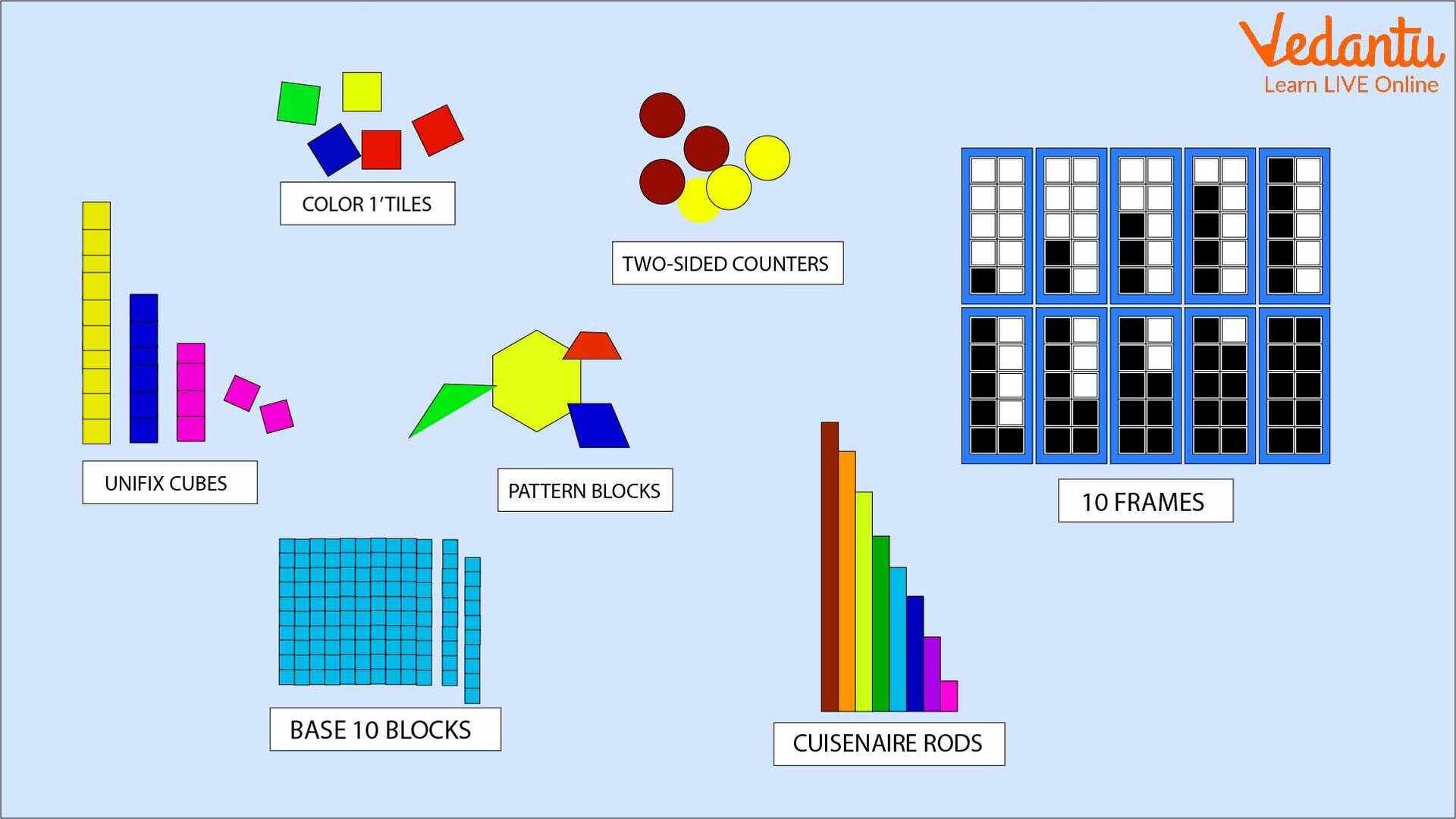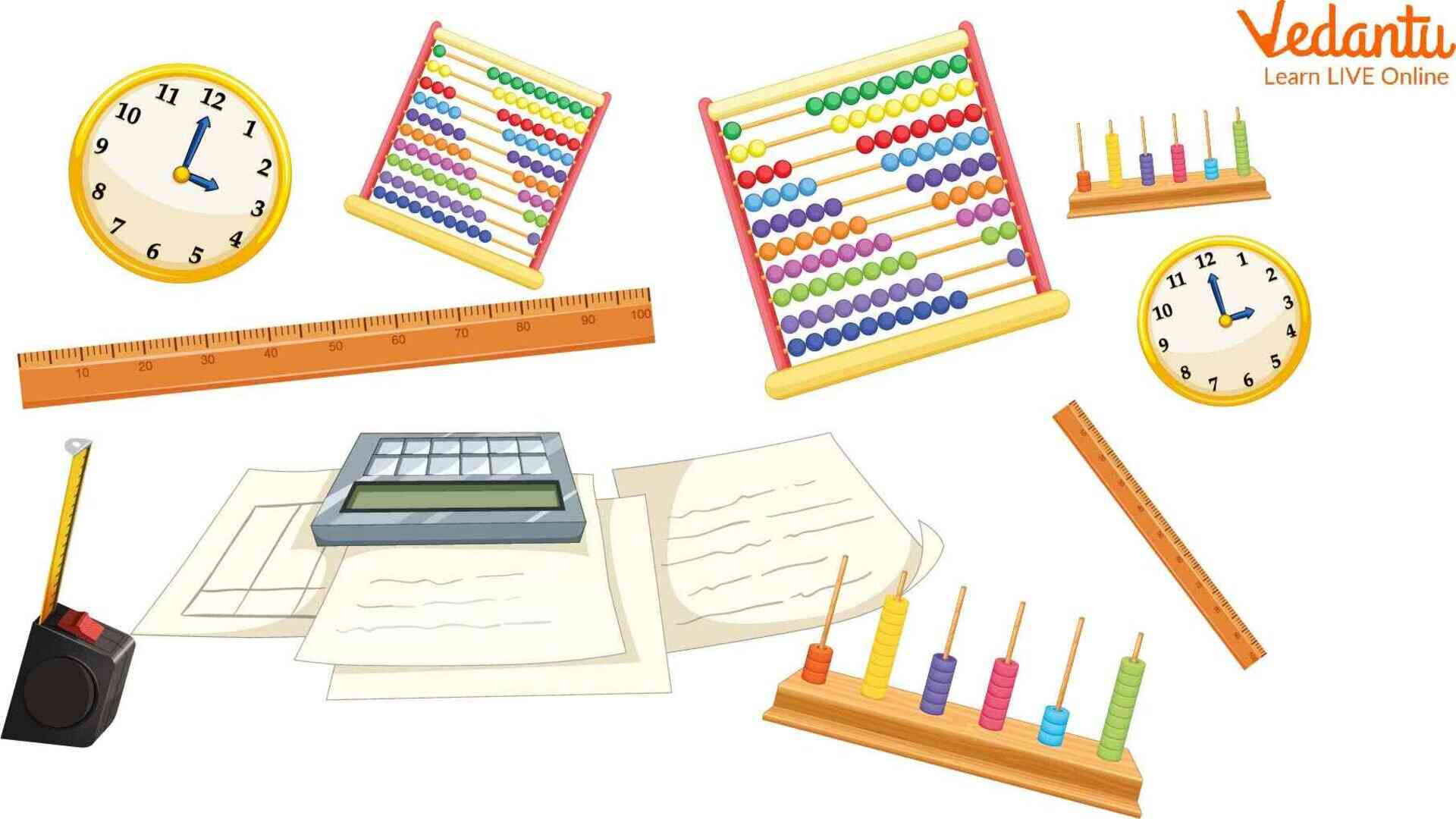How to Use Manipulatives in Maths?
Kids are usually very reluctant to learn something forcefully. Some kids show a special detest in Mathematics. If you use force to teach them, they may become more reluctant to learn the subject. On the other hand, kids always like when teachers play with them and teach them anything with fun activities. So, it is always better to find new ways to teach them playfully.
One of the best ways to teach them Maths is using manipulatives. With the help of manipulatives, even the children who hated the subject a few days ago can start enjoying it. So, in this article, we have discussed different ways of using manipulatives to teach elementary mathematics and the benefits of manipulatives.
What is Maths Manipulative?

Maths Manipulatives for Kids
Before jumping into the benefits of manipulatives, you will need to understand the meaning. Manipulative meaning refers to the technique in which physical objects are used as teaching tools to engage the students. Nowadays, teachers use Maths manipulatives to teach Mathematics more effectively. There are many manipulatives in Math. You can use any object as a manipulative in Maths.
Just make sure the objects allow students to explore the idea very actively. For example, you can use different shapes, paper cuts, blocks, and even spinners as Maths manipulatives. There are so many virtual Maths manipulatives too. Base-10 blocks, pattern blocks, geoboards, tangrams, etc., are some of the examples of virtual Maths manipulatives.
History of Manipulatives
If you want to know how can maths manipulatives help your child learn better, then here is a brief history.
The history of manipulatives is an old technique or method of teaching. People have always used different physical objects to solve various mathematical problems. The Middle East civilization used counting boards for solving mathematical problems.
Later the Romans invented the abacus, which the Chinese modified a little and started using for mathematics. The Aztecs, Americans and Mayans started using counting devices. The Incas invented a counting tool called Quipu.
Later, many educators encouraged the use of different manipulatives to teach kids Mathematics. The name of one such educator is Friedrich Froebel. When he invented the first kindergarten program in the world, he focused on using various tools to help children recognize patterns.
Another Italian educator Maria Montessori put pressure on using manipulatives in teaching Mathematics. Now, the NCTM especially recommends manipulatives for teaching Maths to students.
How to Use Manipulatives to Teach Elementary Mathematics?

Benefits of Maths Manipulatives for Kids
Rather than forcing students to learn something, it is better to grow their desire to learn. Kids learn faster when they enjoy the process of learning. Using manipulatives for teaching Mathematics is one of the ways that kids enjoy it a lot. So, we have mentioned some ways of using manipulatives to teach elementary:
Using Foam Dice can be a very good way of teaching Maths to kids. Students can play ‘Play Fast Facts’ using the foam dice. Take 12 foam dice and divide them into two different teams. The first team gets 1 to 6 dice, and the second team gets 7 to 12 dice. Once a member from every team rolls a dice, one player has to tell the sum of the two dice added together. The team that gets 10 points wins the game and you can start another round.
The colourful Fraction Tile Magnets are good ways to teach kids about Maths. ‘Shopping with Fractions’ is an exciting game that you can play with your students. Set up an area in your classroom with three sets of fraction magnets and three cookie sheets. Now, act as the cashier while students become the customers. All you need to do is, post pictures of different products using fraction prices and ask your students to add things to the given amounts. It is a good way to help them learn how to count.
Sand Timer is another Maths manipulator. When students play in a group, they usually take time to perform when their turn comes. But if you flip the timer and challenge them to act before the sand runs out the children act faster. It teaches students time management.
Benefits of Using Maths Manipulatives
A firsthand experience has no substitute. A child may be able to identify an animal by seeing its photo in a book, but he cannot know about its body or skin type. Manipulatives provide students with ways to construct models of different mathematical ideas.
As students learn Maths using different physical objects, they get the idea of a mathematical problem. As a result, they become confident. So it is not wrong to say that Maths manipulatives build students’ confidence. Manipulatives help to build a robust idea about Maths.
As we have mentioned before, students find learning interesting when the process of Maths learning becomes exciting and fun.
If you give students a Maths problem to solve on paper, the student might face difficulty in the calculation. However, with the help of physical objects like shaped blocks, they can always find it easy to solve the problem. This happens because they find manipulative teaching more interesting and enjoyable.
Just observe different people. Architects use tools to construct models of buildings; doctors have different tools and computers to identify a patient's illness, and engineers build prototypes. Similarly, students find concrete models more useful for solving Mathematical problems than books.
Manipulatives help students to build their ideas. A student learns about different words and symbols from textbooks. They learn about algebra, notation and different signs from it. But manipulatives help them construct the idea in their head properly. As a result, their ideas get enough clarity, and they can learn well.
Conclusion
Learning depends on textbooks. But sometimes, students may find so many words troublesome. They may face difficulties memorizing them, and eventually, the process gets boring. So, they start losing interest in a particular subject. This is very common in Mathematics. Students may find the rules a bit too much. The use of manipulatives while teaching them Maths can decrease this possibility. Using different physical models helps them learn a lot faster. It increases a student’s will to learn.







